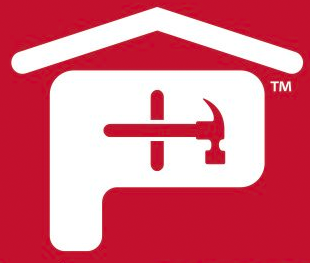

Tips for Peak Heart Health
When roofers crunch numbers for a job, they’re usually thinking about squares of shingles, feet of underlayment and the roof’s slope. The American Heart Association (AHA) wants roofers to keep other numbers in mind:
- 1 in 4 construction workers are clinically obese.
- 1 in 25 construction workers have diabetes.
- 1 in 4 construction workers use tobacco.
- Almost 50% of all construction workers don’t exercise enough.
- And the big one: 1 in 25 construction workers have been diagnosed with cardiovascular disease.
Heart attacks, heart disease, strokes, and heart failure are killing construction workers, including roofers, at an alarming rate. Too many greasy meals and adult beverages, coupled with stress and depression, have led to a health crisis in the construction industry.
Even though the month-long recognition of heart health — American Heart Month — has passed, doctors are still sounding the alarm for construction workers to get heart smart. The AHA wants all construction workers to recognize the risk factors and signs related to cardiovascular disorder (CVD) and remember tips for remaining healthy. Among the biggest risk factor is one that most people in construction wouldn’t even consider — a lack of exercise.
The Physical-Activity Paradox and Roofing
As most people know, tobacco use, diabetes, obesity and inactivity are risk factors for CVD. No one would ever consider construction work — especially roofing — a sedentary job. But when it comes to heart health, roofers — particularly bosses — don’t get all the exercise they need on the job. Even though roofing is intensely physical work, the activity is not enough to offset the health problems caused by poor habits.
Roofing is one of the jobs that epitomizes the “physical-activity paradox” — all that lifting, climbing and bending on the job doesn’t produce the same health benefits as leisure-time exercise. For bosses, managers and company owners, the paradox is even more relevant since they’re typically not as active as the workers on rooftops.
“The physical-activity paradox has been shown to be associated with long-term sickness absence [work absences lasting more than 28 days] — an established predictor of all-cause mortality, chronic disease and early exit from the labor market with considerable economic burdens on companies and society,” researchers said in the International Journal of Behavioral Nutrition and Physical Activity.
Other silent CVD risk factors include:
- Pre-diabetes
- High blood pressure
- High cholesterol
- Stress
- Unhealthy eating and nutrition
- Non-modifiables including family history, age and gender
Preventing CVD at Any Age
During the American Heart Month in February, the Centers for Disease Control and Prevention (CDC) pointed out that CVD and heart attacks are not exclusive to the aging crowd. The conditions that lead to heart diseases — such as obesity, inactivity, stress and high cholesterol — can happen at any age.
“High rates of obesity and high blood pressure among younger people (ages 35-64) are putting them at risk for heart disease earlier in life,” the CDC said. “Nearly half of all Americans have at least one of the top three risk factors for heart disease: high blood pressure, high cholesterol and smoking.
Practical Solutions for Busy Roofers
To stop problems before they start, the CDC recommends:
- Quitting smoking and drinking—
Quitting smoking and drinking can be challenging for anyone. The Substance Abuse and Mental Health Services Administration (SAMHSA), through the U.S. Department of Health and Human Services, provides treatment and referral services for assistance with mental health or substance use disorders. The organization’s free helpline, 800.662.HELP (4357) or TTY: 800.487.4889, is confidential and available 24/7. - Managing blood pressure, cholesterol and blood sugar—
When it comes to treating high blood pressure, cholesterol and blood sugar, primary care physicians can offer the best solutions over the long term. For day-to-day monitoring, there are other solutions:
--Some pharmacies and grocery stores offer free access to blood pressure monitoring devices.
--Individuals who have high blood sugar may be eligible for a free or affordable blood glucose meter.
--At-home cholesterol tests are becoming increasingly popular but medical experts question the reliability. - Getting active, eating healthier and losing weight—
Despite having a seemingly active job, roofing company owners, managers and bosses struggle with weight gain and healthy eating. Getting healthier can be as simple as walking more and choosing water instead of soda. Small steps can make big results. - Controlling stress—
No doubt, running a roofing business is stressful work. Take some time during the day to unwind. Do something besides work. Make time for hobbies, exercise more and get enough sleep.
In addition, the AHA and CDC recommend workplaces keep employees safe by taking extra precautions:
- Purchase an automated external defibrillator. | AEDs analyze heart rhythms and deliver an electric shock to restore functioning if necessary. The American Red Cross works with AED manufacturers to help private companies purchase discounted devices and get employee training.
- Teach employees proper CPR procedures. | The American Red Cross also provides information for online and in-person CPR training. The organization also put detailed CPR guidelines on its website for quick reference.
- Develop a plan for a healthier workplace. | Organizations including the CDC and the U.S. Office of Disease Prevention and Health Promotion help workplaces improve employee health by providing free guidance and plans.
Overall, health experts say the small steps to healthier living and a healthier workplace can ultimately pay dividends. Interested in learning more about your heart health? Take the AHA’s My Life Check assessment to determine your CVD risks.









 Gear!
Gear! PRO LOGIN
PRO LOGIN